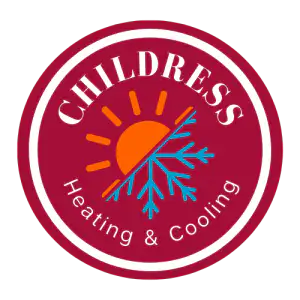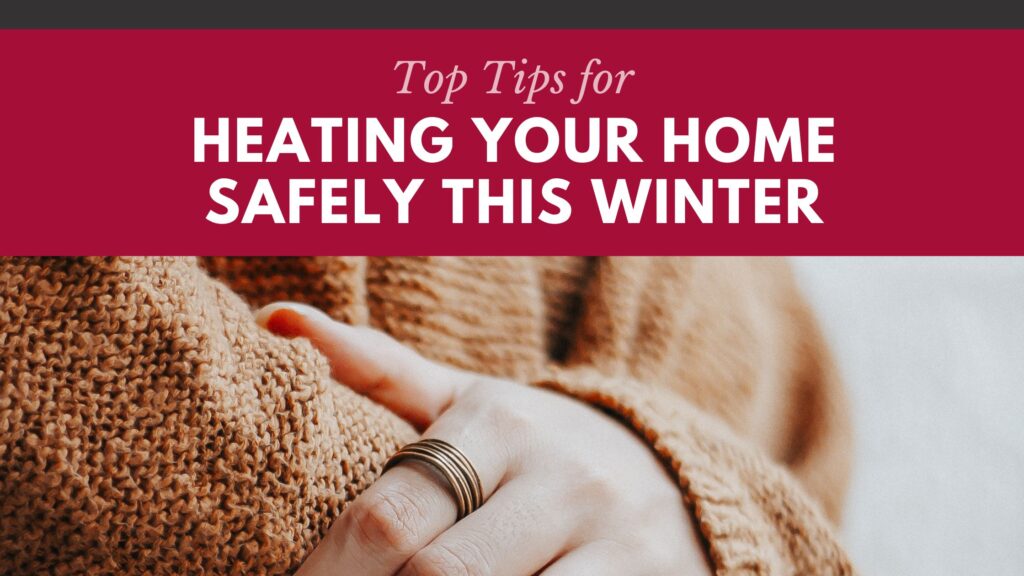As the weather starts to turn toward the cool side, it is always a good idea to brush up on tips for keeping your warm and cozy in the safest way possible come wintertime. December, January, and February are the leading months for home heating accidents, primarily fires. There are a few main areas to concentrate on to keep your family safe. Follow these top tips for heating your home safely this winter.
Top 6 Winter Heating Safety Risks
Space Heater Fires
Space heaters account for 4 out of 5 heating fire deaths, according to the National Fire Protection Association. Space heater fires are the number one heating safety risk in your home. Be sure to always unplug space heaters when not in use, and never plug them into an extension cord. Also note that space heaters, when in close proximity with your skin, can cause underlying burns that you may not notice until later when they begin causing complications. Keep all objects including your skin, at least 3 feet from space heaters at all times.
Heating Your Home by Oven
Using a gas oven or stove top to heat your home presents the second highest heating risk in your home. You always read about it as a “don’t” but here’s why you should never use an oven or stove top to heat your home:
First, it’s extremely inefficient. It may heat the surrounding area, but the heat won’t travel throughout your home, so you’re only wasting energy and money. Second, if your oven is gas and that gas is running for too long a period of time, you’re risking carbon monoxide poisoning in the air in your home. Lastly, for both electric and gas ovens, you’ll have a physical risk of a child or pet accidentally burning themselves. Don’t use your oven to heat your home!
Carbon Monoxide Poisoning
We all know that you should keep your home tightly sealed to keep in the heat. You can do a DIY home energy audit to find and seal air leaks. However, with your home tightly sealed against drafts, you can run the risk of carbon monoxide build-up. Make sure to have a carbon monoxide detector installed in your home, in addition to fire and smoke detectors. You should also ensure a licensed HVAC professional installs your furnace and provides regular maintenance as well.
Chimney Fires
When you burn wood, your chimney can become filled with creosote, a tar-like substance that is a natural side effect of burning wood. A chimney-sweep can check the structure of your flue and chimney. Your chimney should be inspected and cleaned annually.
Fireplace Sparks and Ashes
If you do use a fireplace, be sure to place a screen in front of the fire to prevent any sparks from hitting flammable materials in your home. Keep all objects, including yourself, at least 3 feet away from a burning fireplace.
Candle Fires
While not a heating source, candles, fireplaces, and cold weather all go together. When using candles, remember these steps for candle safety:
-
- Don’t leave a candle burning unattended. Make sure the candle is completely out and the wick tip is no longer glowing.
- Never burn a candle near something that could catch fire.
- Don’t burn candles less than 3 inches apart. This will ensure they don’t melt each other, or create their own draft which would cause them to melt irregularly.
- Avoid drafts or vents, which can cause the flame to burn irregularly.
- Keep away from pets and kids! Melted wax can scald, and a turned over candle can ignite a fire.
Contact Us
Above all, use common sense when it comes to keeping your home warm this winter. If your heating system needs attention, or if you have questions about heating your home, feel free to contact us. Childress Heating & Cooling is your local American Standard Customer Care Dealer in Southside, AL. Our technicians are factory trained and certified to provide you with the best HVAC services around.
Follow us on Instagram and Facebook to be the first to know when more helpful blogs are posted!

